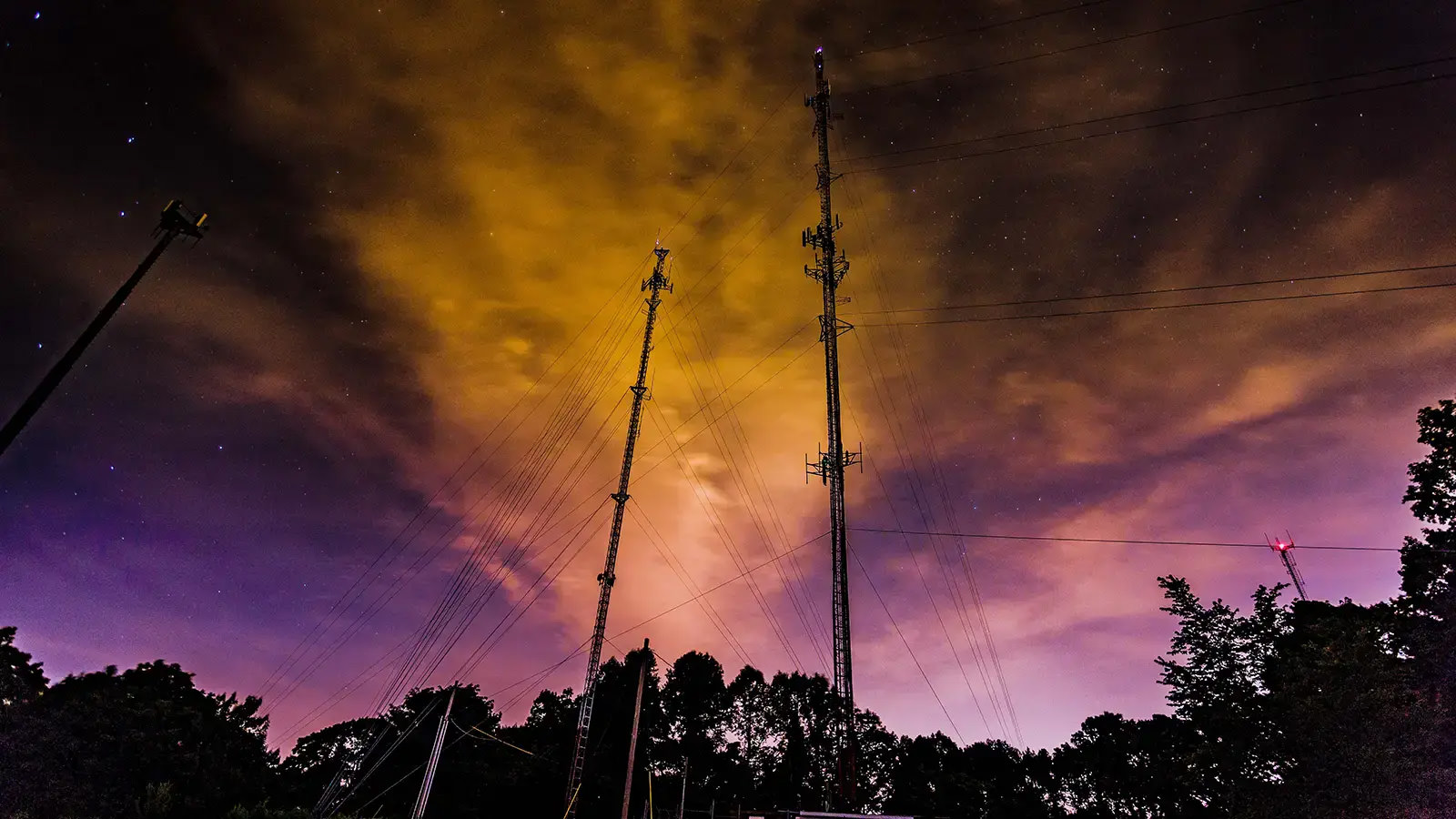
Why millimeter wave wireless communications?
The role of telecommunications in social development and building a sustainable society in the future will become even more important in the future. The use of millimeter waves, with their high-speed, high-capacity, and low-latency characteristics, will become extremely important in this context. This article discusses the need for millimeter wave to utilize higher frequency bands than ever before...
2023/12/01
Posted on 2023/12/01
The role of telecommunications in social development and building a sustainable society in the future will become even more important in the future. The use of millimeter wave, with its high-speed, high-capacity, and low-latency characteristics, will be extremely important in this context. This article discusses the need for millimeter wave to utilize higher frequency bands than ever before. (This article discusses the need for millimeter wave from the following five perspectives: (1) securing frequency resources for future traffic growth, (2) supporting future high-speed, high-capacity, low-latency services, (3) economic efficiency and energy efficiency, (4) developing new use cases, and (5) gaining a foothold for additional frequency allocation in the future. The need for millimeter wave is explained from the following five perspectives.
To date, there is no doubt that the development of mobile communications from 1G to 5G has played an important role in the development of society. The role of telecommunications will become even more important in building a sustainable society in the future. To address this, the use of millimeter waves, which are characterized by high speed, large capacity, and low latency, is extremely important. Furthermore, millimeter wave solutions will be the base of consideration for 6G in the 2030s, and will be a prerequisite for the study of sub-THz band utilization. The need for millimeter wave is discussed in detail below from multiple perspectives.
Secure frequency resources for future traffic growth
Over the past few decades, mobile communication traffic has continuously increased with the spread of multimedia services and smartphones. Furthermore, with the introduction of 4G, there has been an increase in demand not only for human communications, but also for communications of objects with the spread of the Internet of Things (IoT). In addition, in various industries, there is a growing need to convert wired communications to wireless using 5G, as well as a need to improve business efficiency through communications in line with the advancement of DX. As shown in Fig. 1-1, mobile communication traffic has been continuously increasing, with a 1.2-fold increase over the past year and a 1.8-fold increase over the past three years. These trends are expected to continue in the future, and further increases in mobile traffic can be expected as new mobile communication needs may emerge in the future.
![Fig. 1-1 Trends in mobile communication traffic [1].](https://www.telegraphic.jp/wp-content/uploads/2023/11/fig-1.png)
Fig. 1-1 Trends in mobile communication traffic [1].
The GSMA report [2] shows that by 2030, the traffic growth will be 4.5GHz, 350MHz, and 350MHz for eMBB, FWA, and enterprise networks, respectively, as shown in Fig. 1-2. According to [2], as shown in Fig. 1-2, millimeter wave frequency resources of 4.5 GHz, 350 MHz, and 150 MHz are required for three use cases of eMBB, FWA, and enterprise networks, respectively, for a total of 5 GHz by 2030. For these reasons, it is imperative to utilize millimeter wave frequency resources.
![Fig. 1-2 Millimeter-wave frequency demand forecast to 2030 [2].](https://www.telegraphic.jp/wp-content/uploads/2023/11/fig-1-2.png)
Fig. 1-2 Millimeter-wave frequency demand forecast to 2030 [2].
Support for future high-speed, high-capacity, low-latency services
Many services and applications have been developed and are expected to be developed in the future, taking advantage of 5G's high-speed, high-capacity, and low latency characteristics. In the enterprise market, there are many needs for remote monitoring and remote control, security through AI processing of video, monitoring, and prediction of failures and faults, and more advanced services are expected to be developed. In order to respond to these needs, 4K and even 8K video quality will be required in the future, and a communication infrastructure capable of transmitting such video will be necessary.
Many services and applications utilizing XR devices are already available for both consumers and enterprises, but it is expected that new attractive services and applications will be created in the future as XR devices become lighter and more advanced with higher resolution and functionality in image expression and 5G communication functions. In the future, however, new attractive services and applications are expected to be created as XR devices become lighter, image expression becomes higher resolution, and functionality improves.
Robotics will be used not only for special applications in factories, but also in people's living environments at an accelerated pace, and services such as monitoring, monitoring, and nursing care will become widespread.
These are just a few examples. In the future, as devices develop, various advanced services and applications are expected to be developed. As a result, the need for high-speed, high-capacity and low-latency communications is expected to increase. Conversely, the provision of high-speed, high-capacity, low-latency services in the right places at the right time is expected to promote the development and diffusion of these advanced services and applications.
Economy, energy efficiency
With the expected rapid growth of telecommunication traffic, intensive traffic is expected to occur in certain locations and areas, such as stadiums, indoor shopping malls, railroad stations, and outdoor areas with high density of people. The study [3] shows an example of traffic that will be +1161 TP3T from 2021 to 2026 in one particular location, as shown in Fig. 1-3. In contrast, as the implementation cost per data traffic of millimeter wave decreases year by year, the implementation cost of millimeter wave will decrease by 75% relative to midband in 2026, and the number of small cells required per hot zone will decrease by 74% relative to midband in 2025, in addition to In addition, power consumption is expected to be reduced by about 701 TP3T. The installation of millimeter wave base stations in strategic locations is expected to reduce the total cost of ownership (TCO) of 5G networks for telecommunications carriers, as they will be able to handle the growing traffic with high economic efficiency.
![Fig. 1-3 Millimeter wave implementation cost and power consumption estimates [3].](https://www.telegraphic.jp/wp-content/uploads/2023/11/fig-1-3.png)
Fig. 1-3 Millimeter wave implementation cost and power consumption estimates [3].
Developing new use cases
Millimeter wave's characteristics of high linearity, wide bandwidth, and operation by beamforming have the potential to open up new use cases. For example, it has been reported that centimeter-level positioning accuracy can be achieved by using millimeter waves in positioning [4-7], in which a reference signal for positioning is transmitted and received at a 5G base station or 5G mobile station and the position of the mobile station is determined based on the propagation delay difference and arrival angle [8]. In the future, it is also expected that sensing functions to estimate the position, shape, and state of arbitrary objects, not limited to 5G mobile stations, by measuring reflected radio waves, and the standardization of Joint Communication & Sensing [9], which integrates 5G data communication and sensing, are also envisioned. In the case of Joint Communication & Sensing, it is expected to create new services that have never existed before, such as traffic traffic monitoring [10] using 5G networks, for example.
Stepping stone to additional frequency allocations in the future
As noted above, millimeter wave is expected to be utilized for a variety of reasons, each of which is ongoing rather than short-term in nature. Therefore, the frequencies currently allocated, including the 28 GHz band, will not be sufficient for the future, and additional frequency resources will need to be allocated and utilized during the 2020s. Considering the expectation of higher speed, higher capacity, and lower latency in the future, frequency resources with a certain wide bandwidth are necessary, and it is expected that additional frequency bands above quasi-millimeter wave will be utilized. In order to utilize these additional frequencies in a timely manner and promote future social development, it is essential to develop solutions and operational skills that can make solid use of the 28 GHz band from the current stage.
Studies on 6G in the 2030s are already vigorously underway [11-13], and ultrahigh speed, high capacity, and ultra-low latency that are 10 to 100 times faster than 5G are required, and frequencies up to subterahertz that reach several hundred GHz are being considered. However, the use of millimeter waves is a prerequisite for considering the use of sub-THz, and conversely, unless the technology and skills to firmly utilize millimeter waves in 5G are put to practical use at the current stage, the consideration of sub-THz for 6G will be meaningless. On the contrary, by firmly establishing and operating millimeter wave solutions at the current stage, it will be possible to efficiently develop sub-THz solutions.
As mentioned above, for sustainable social development, it is important to consider additional allocation and utilization of 5G frequencies in the 2020s and sub-THz for 6G, and the diffusion of the currently allocated 28GHz is an important stepping stone and prerequisite. The development of solutions, use cases, and operational skills for this purpose is an urgent task.
References
- Information and Communication Statistics Database, Ministry of Internal Affairs and Communications
https://www.soumu.go.jp/johotsusintokei/field/data/gt010602.pdf - GSMA Vision 2030: mmWave Spectrum Needs, Full Report
https://www.gsma.com/spectrum/wp-content/uploads/2022/06/5G-mmWave-Spectrum.pdf - Bell Labs Consulting, The business of 5G mmWave, 2022.
- 3GPP TR 38.855, v16.0.0, Study on NR positioning support
- 3GPP RP-190752, New WID: NR Positioning Support, Ericsson
- 3GPP TR 38.857, v17.0.0, Study on NR positioning enhancements
- 3GPP RP-210903, Revised WID on NR Positioning Enhancements, Intel Corporation, CATT
- 'Experimental Investigation of 5G Positioning Performance Using a mmWave Measurement Setup,' 2021 International Conference on Indoor Positioning and Indoor Navigation (IPIN), George Yammine, et. al.
- 'Multibeam Design for Joint Communication and Sensing in 5G New Radio Networks,' 2020 IEEE International Conference on Communications (ICC), Carlos Baquero Barneto, et. al.
- https://www.ericsson.com/en/blog/2021/10/joint-sensing-and-communication-6g
- Ministry of Internal Affairs and Communications, Beyond 5G Promotion Strategy -Roadmap to 6G-.
https://www.soumu.go.jp/main_content/000696613.pdf - Ministry of Internal Affairs and Communications, "Beyond 5G Promotion Strategy (Summary)," June 2020.
https://www.soumu.go.jp/main_content/000702111.pdf - Beyond 5G Promotion Consortium White Paper
https://b5g.jp/output/
The content of this article has been excerpted and edited based on the 5GMF White Paper "Advanced 5G with Millimeter Wave Penetration, Version 1.0" published by 5GMF on March 31, 2023. The white paper was updated to Version 2.0 on July 3, 2011. To view the full document, please click5GMF Web siteDownload from





